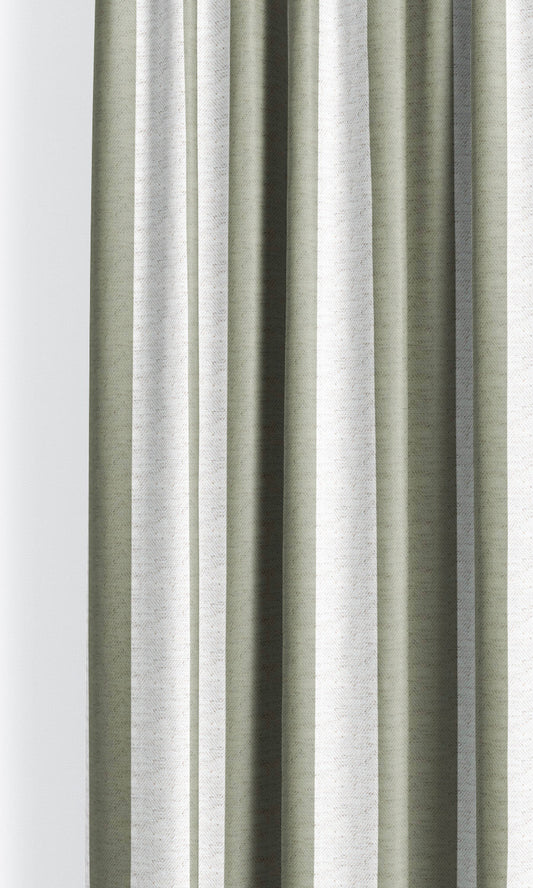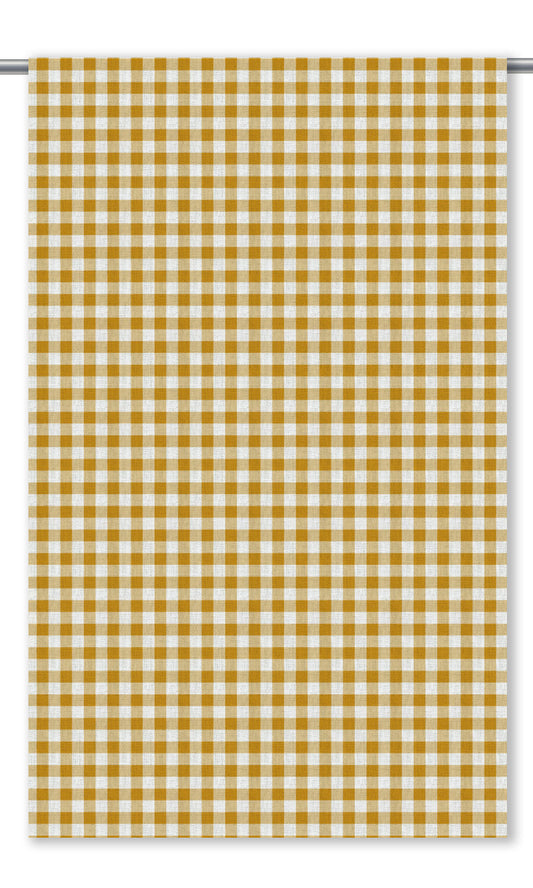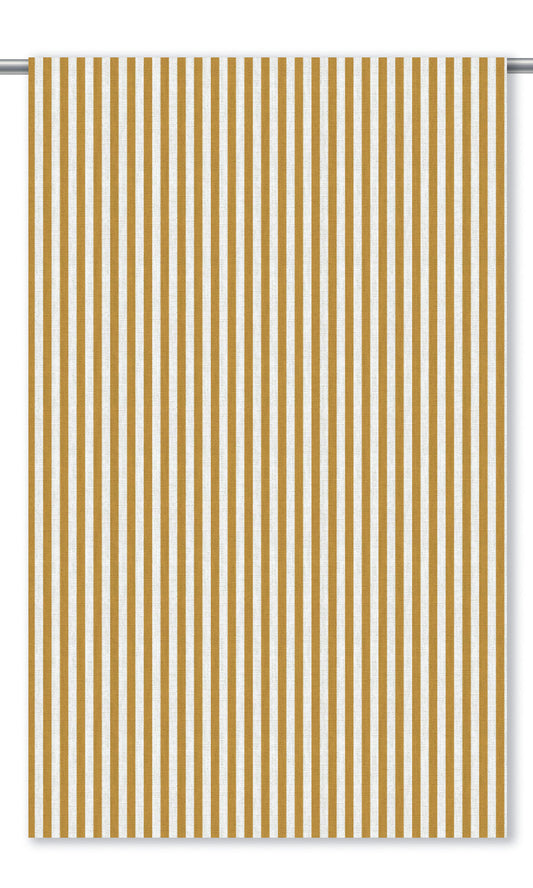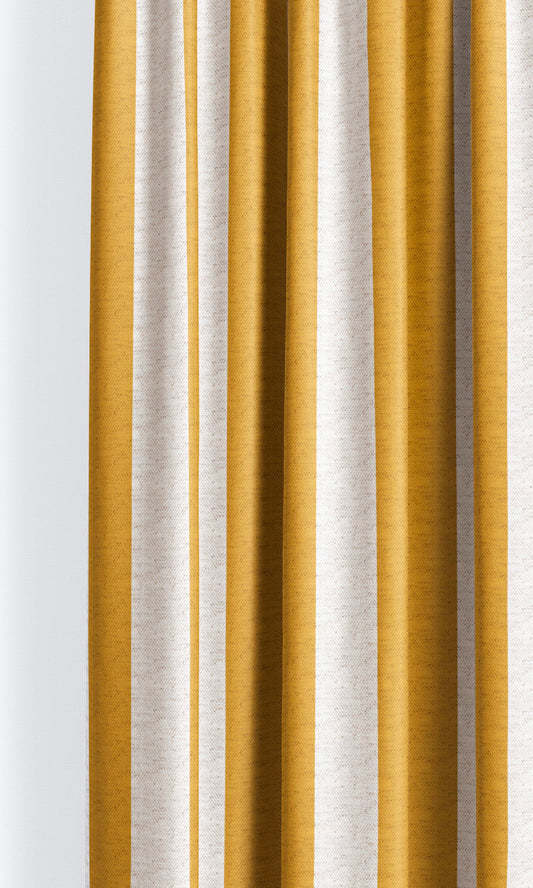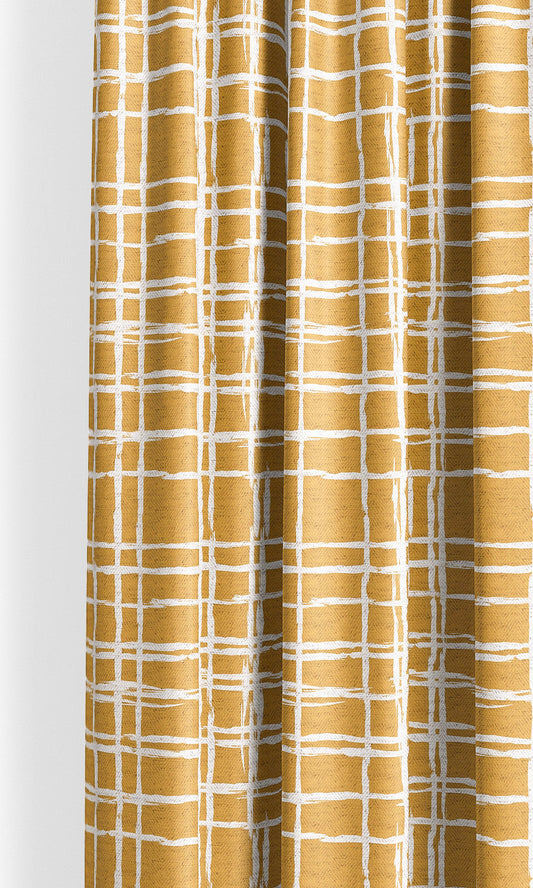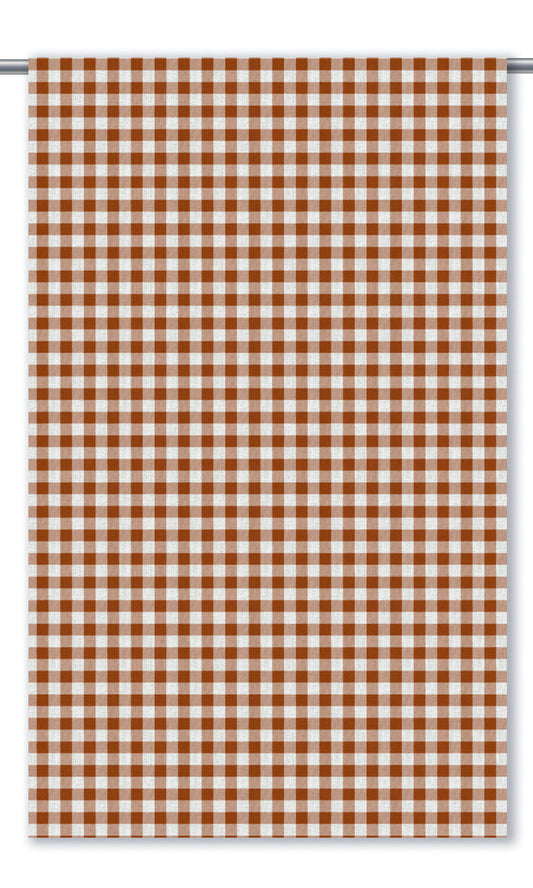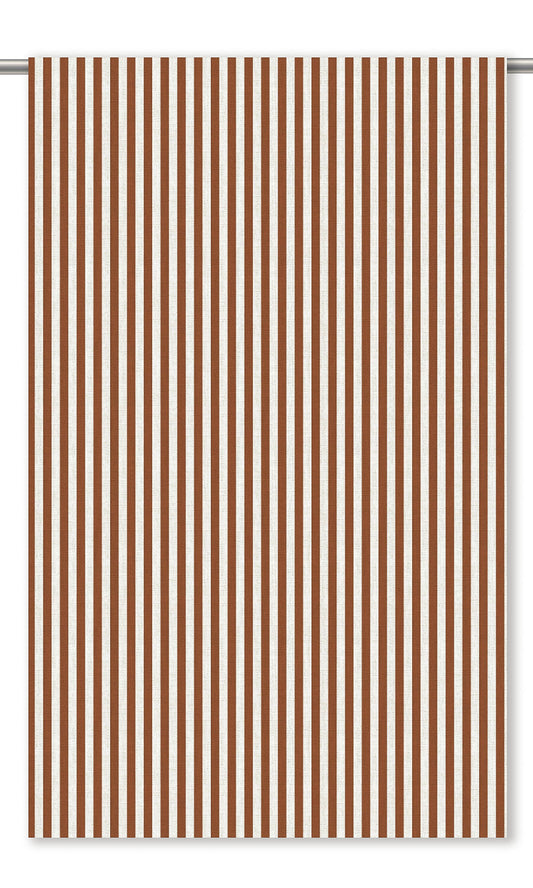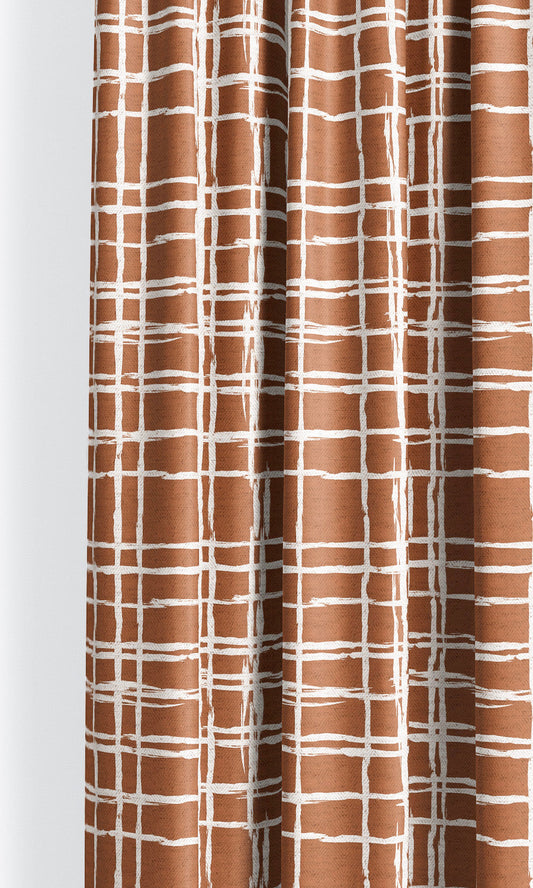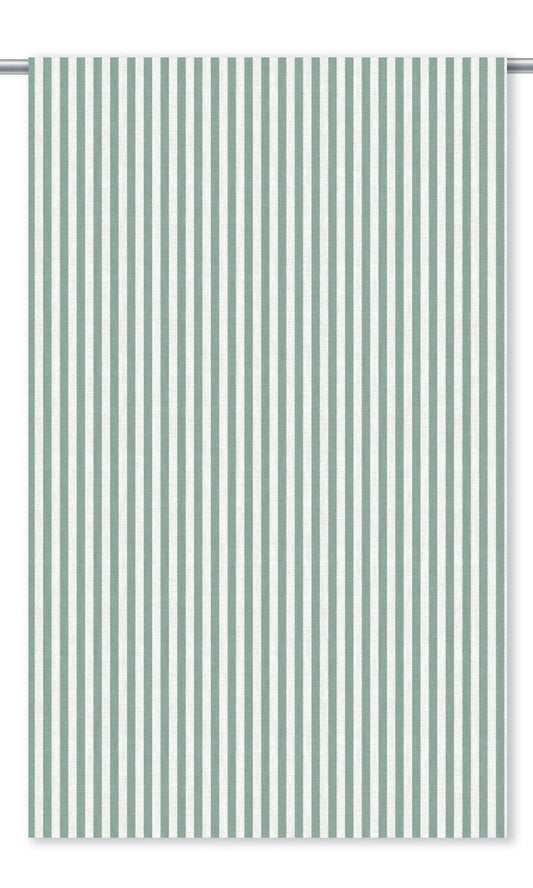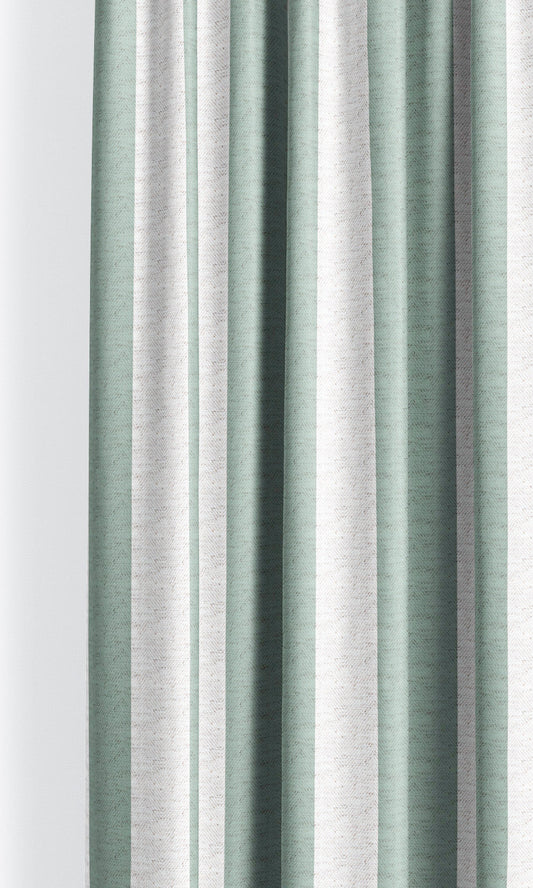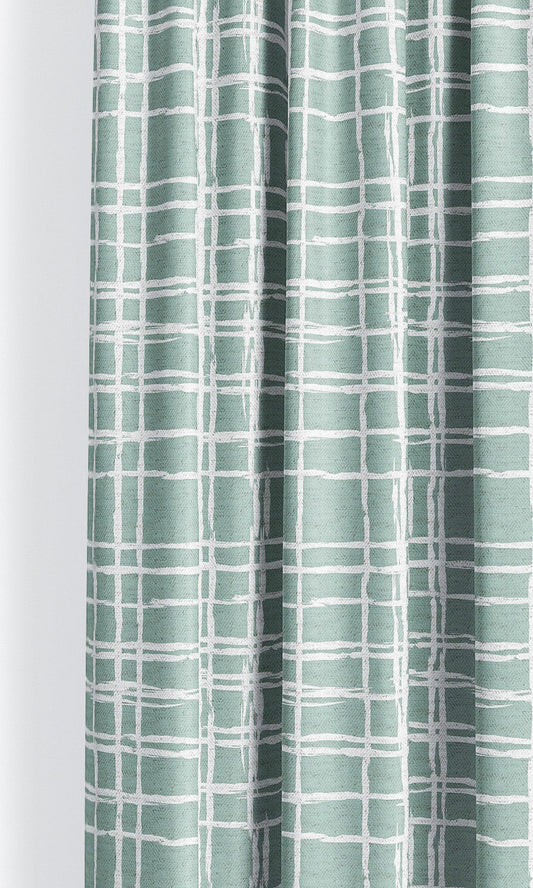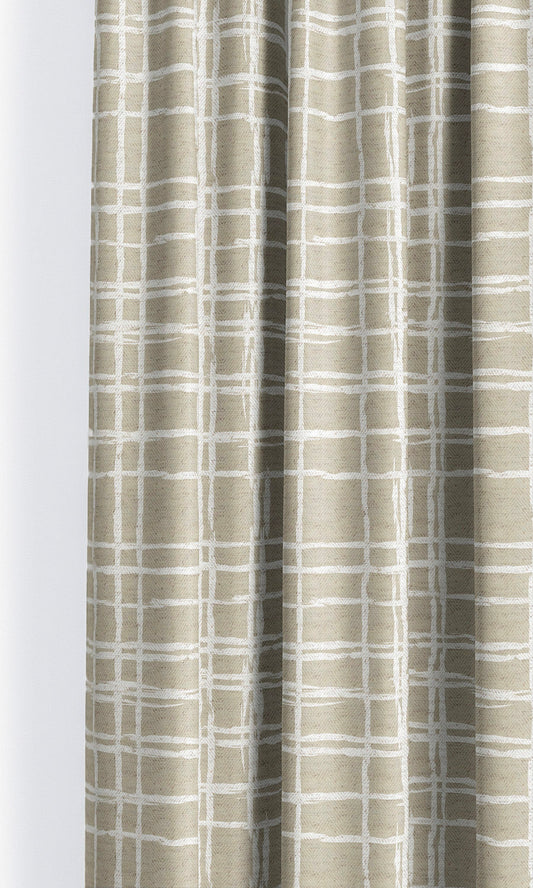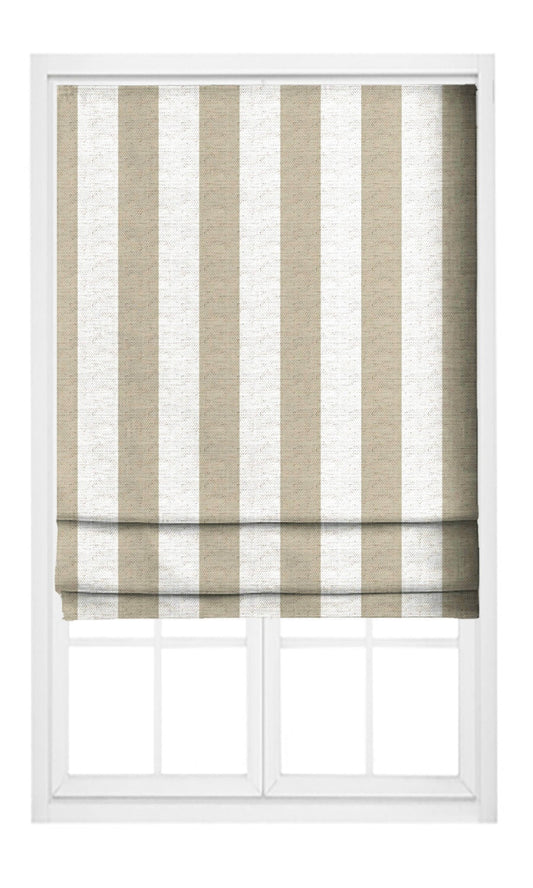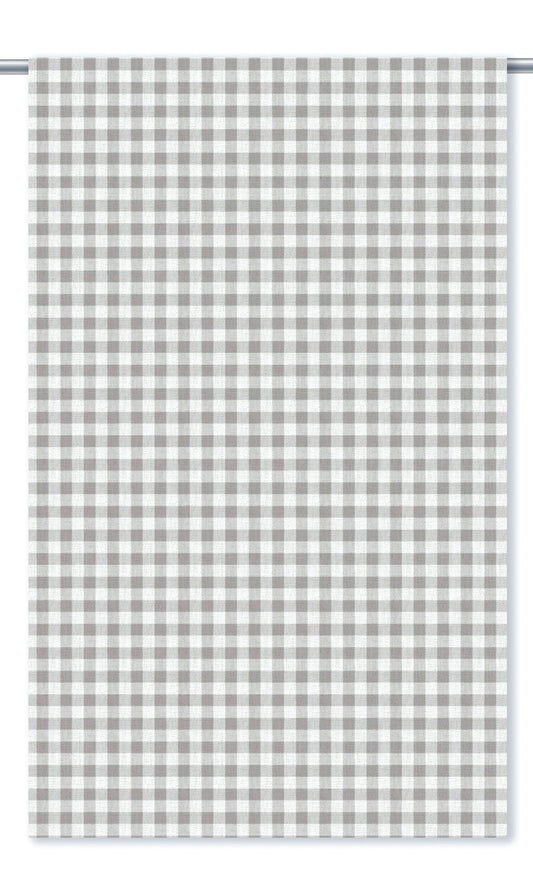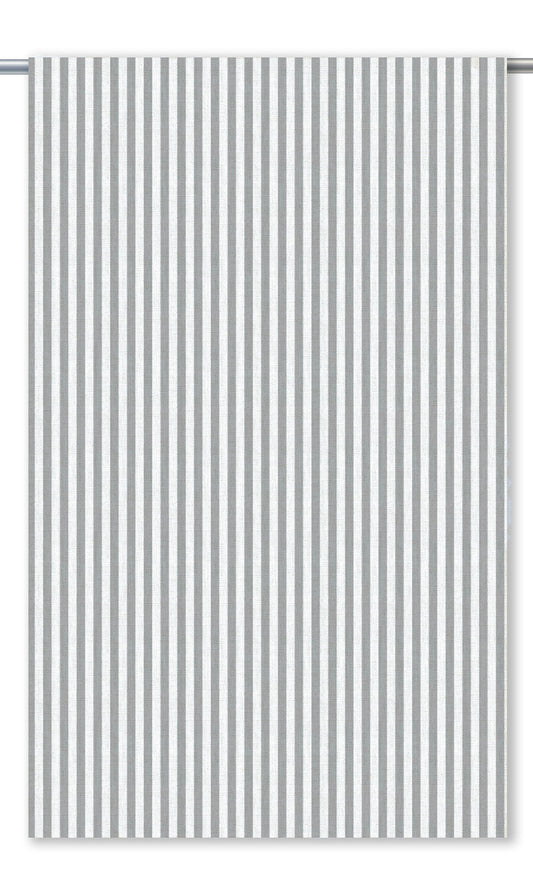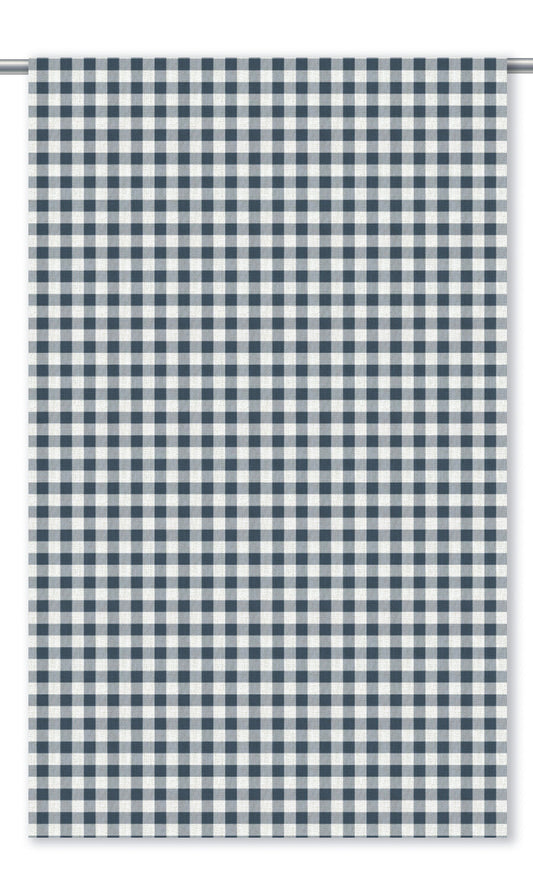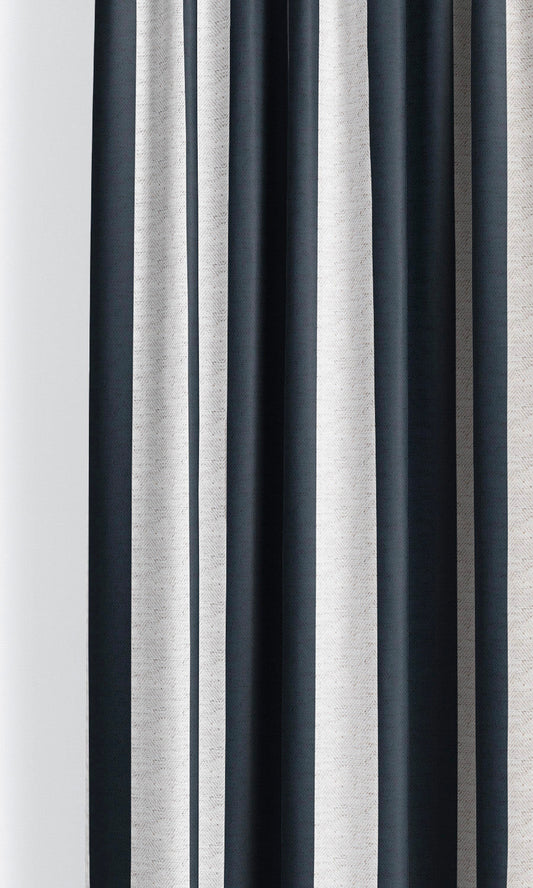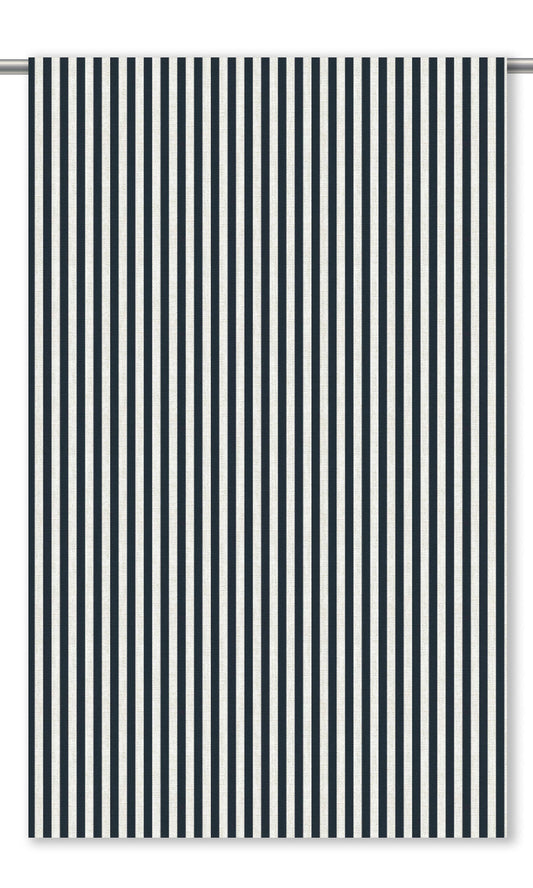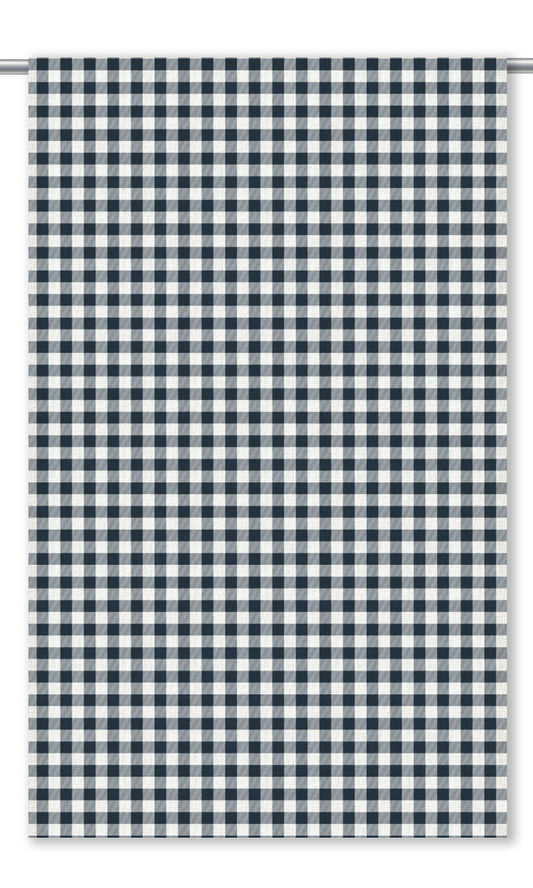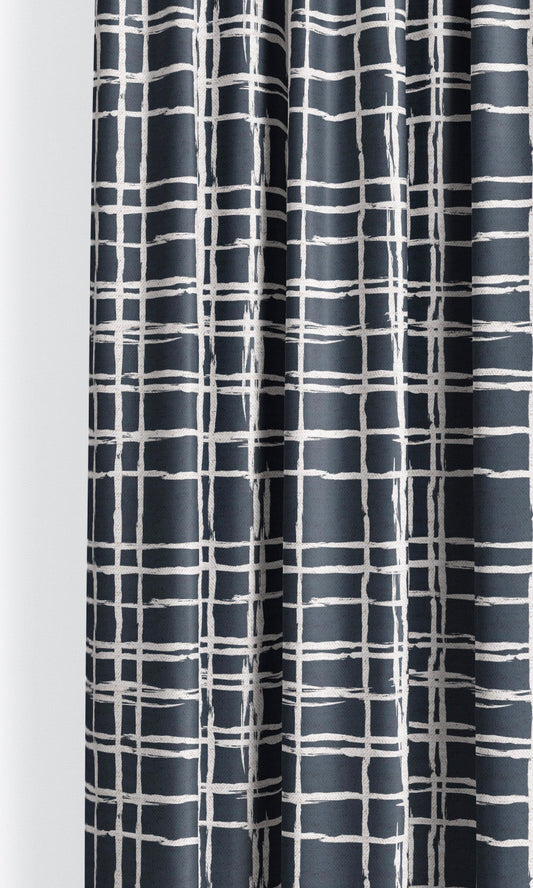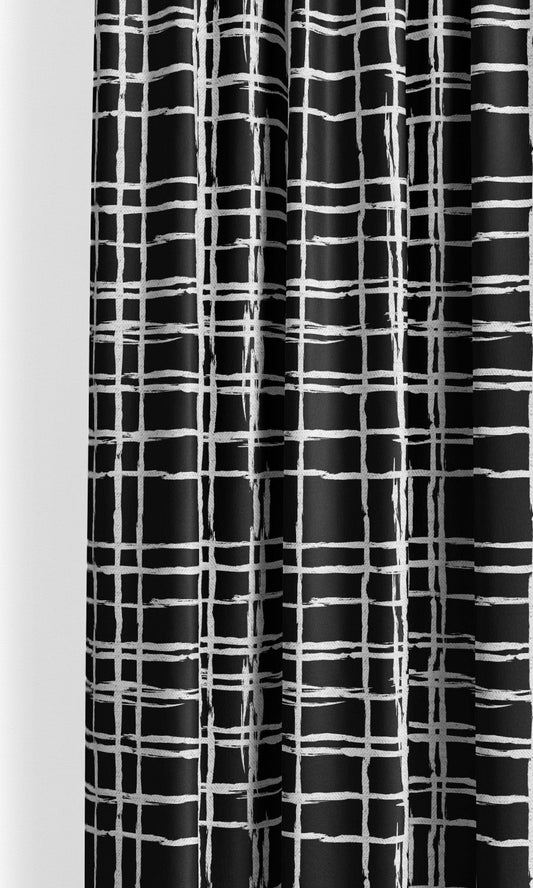The story of geometry in interiors begins far before modern design. The ancient Greeks lined their temples with meanders and key patterns, and Islamic builders transformed geometry into transcendence with girih patterns in stone and jali screens. Over centuries, geometry has reshaped itself through the lens of art and design. Art Deco reveled in bold symmetries, its interiors glittering with chevrons, zigzags, and radiant sunbursts. The Bauhaus and De Stijl translated lines, grids, and blocks of colour seamlessly onto textiles and interiors. By mid-century, geometrics filled wallpapers and upholstery with atomic starbursts and kaleidoscopic prints, while the Pop Art of the 1960s and ‘70s turned living rooms into optical experiments alive with pulsating checks and vibrating stripes.
Today, when geometric print curtains drape a window, they bring this entire lineage into a room. A chevron carries the glamour of Art Deco, a lattice recalls Moorish courtyards, a stripe echoes Bauhaus clarity, while a tessellated repeat whispers of ancient mosaics beneath the Mediterranean sun. These patterns endure because they are universal, found in both history and nature, from honeycomb cells to nautilus shells.
Choosing geometric patterned curtains for your home opens up a universe of opportunities to you. And if you’re looking for ideas, inspiration, and styling tips before heading towards our virtual aisle with a shopping cart, read on!
MORE FROM THE STORE: Geometric Roman Shades | Checkered Curtains | Striped Curtains
Pick a Pattern that Syncs with Your Style
Geometric print curtains are chameleons of the decor world. Stripes, checks, lattices, argyles, chevrons - each brings a different mood, from Deco glamour to minimalist calm. The key is finding the repeat that resonates with your decor, transforming your geometric patterned drapes into a natural extension of your style and window.
If your home leans Art Deco, consider curtains featuring chevrons, sunbursts, and zigzags that mirror the glamour of mirrored consoles and brass accents. Options like Cader and Pacific Fog will surely seal the deal here. For interiors with Mediterranean or eclectic touches, lattice and trellis repeats conjure courtyards of faraway mystic places. Drapes featuring such patterns, like Kadapa and Riverdale, add a sense of carved detailing without overwhelming the room. Minimalist spaces shine with clean stripes and grids, letting geometry add rhythm without clutter. Eclectic rooms can handle stronger statements, such as diamonds, hexagons, or tessellations.
The beauty of geometry is its range: crisp enough for modernists, intricate enough for traditionalists, playful enough for mid-century dreamers. Whatever your style, there’s a line, vine, angle, or repeat that will feel right at home on your windows.
Select Scale that Matches Your Space
Scale is what determines whether a pattern whispers or commands. On drapery, a motif becomes more influential owing to the sheer visual real estate occupied by drapes. That’s why the same pattern can whisper in a cushion but command the entire wall when repeated across full-length panels.
Bold oversized geo-prints, as seen in Sugared Cocktail or Royal Retreat, unfurl best in grand rooms with generous proportions, where tall windows and high ceilings give geometry enough space to breathe. In such settings, the geometric print curtain doesn’t just frame the view; it becomes an architectural gesture, bold enough to rival panelled walls or patterned floors.
Smaller-scale patterns, by contrast, read almost as visual texture on curtains. A pinstripe has the neat precision of a tailored suit, and a fine herringbone offers movement that is felt more than seen. These are best suited for modest spaces or small windows where subtlety is preferred over grandeur. Remember, if the pattern has an overwhelming presence, best save it for a space that can do justice to its grandeur.
The question you must ask is: should my curtains command attention, or should they whisper like supporting cast, enhancing the story without stealing the scene? And your answer should guide your choice of scale. Larger patterns are designed to garner attention, while smaller ones are intended to blend into the backdrop. This, of course, works in tandem with palette, which brings up to our next tip.
Pick a Palette in Tune with Your Goal
Colour is the emotional register of geometric patterns. Because drapery often occupies a substantial vertical plane and interacts constantly with light and furnishings around, the palette of your curtains can shift the entire personality of a room. The same motif can shift character depending on the palette: a bold chevron in black and white recalls the high contrast glamour of Art Deco salons, while the same pattern in soft taupe and cream feels inspired by Scandi-aesthetic. Classical palettes, like the terracotta-and-black of Greek meanders or the lapis, jade, and gold of Islamic geometry, remind us how strongly colour can shape the character of a pattern.
The palette also determines whether a pattern declares itself like a fanfare or settles into the room like a murmur. A high-contrast pattern on full-length curtains reads bolder than it does on any small accessory, simply because of the surface area. Plus, the palette works in tandem with the scale you choose. A bold stripe in deep blue and white, like Simsbury, will dominate a space, while the very same stripe in blush pink, as in Jericho Rose, may simply hum along the wall.
If you’re drawn to bolder, oversized geometric prints but worry about overwhelming the room, the simplest sleight of hand is to temper the palette. Conversely, muted tones, tone-on-tone pairings, or soft neutrals allow scale to stretch, giving you impact without intimidation.
Choose the Right Level of Intricacy & Density
While essentially composed of lines, angles and curves, geometric patterns can be as intricate and complex as any other print in the decor lane. And how complex a geometric print reads to the eye depends on the level of detailing of the motifs and the frequency of the repeat. A diamond can be rendered as a crisp, singular form, or multiplied into a lattice of interlocking facets that shimmer like cut glass. Stars can become infinite, hypnotic surfaces, while pared-down grids can reduce geometry to its most essential beat.
A pattern’s intricacy and density invites a deeper look at the drapery’s heading style and fullness level - two elements that can easily amplify a pattern’s visual complexity and busy-ness.
The structured, tailored pleats of the pinched pleat styles, for instance, compress the pattern and make it appear a touch busier than it would on the relatively looser gather of flat panel or grommet top headers.
Curtains with dense pleats, likewise, layer the print repeatedly within each fold, heightening the overall visual activity. By contrast, low-width panels create sparser, shallower pleats that introduce far less bustle, allowing the most complex motifs to breathe a little easier.
So, if you wish to avoid amping up the pattern’s buzz, lean towards low-profile headers and modest ‘fullness’ panel widths. Conversely, if you’re working with a well-spaced geo-print with generous negative space to start, we suggest pairing with densely pleated, sculptural headers that multiply the pattern, creating a richer, more visually striking look.
Pair Your Geometric Print Drapes with Other Patterns
Geometric prints have hardly ever lived in solitude. Across eras and cultures, patterns have been paired and layered to heighten visual drama. Star lattices were married to floral arabesques, stripes were friends with curvalicious damasks, checks lived with chintz, and so on. And what do these pairings teach us? Simple: lines in their straightforward presence thrive when placed against the undulating curves.
But here’s the thing, layering patterns is a game that needs utmost discerning, or you may end up with a clash-of-clans moment in your decor. With the goal of orchestrating a show in harmony, here are a few things to keep in mind:
-
CONTRAST: Sometimes the most effective pairings are opposites. Straight lines find poetry when set against curling vines, and sharp grids soften when paired with painterly florals. Dorothy Draper built her hotel ballrooms on exactly this principle, placing oversized stripes against baroque blooms, while Nancy Lancaster’s English country rooms often balanced regimented checks with meandering chintz.
-
SCALE: Layer different scales of patterns across the room. In case your drapes carry a large-scale geo-print, bring in smaller prints via cushions or runners. However, if your drapes flaunt a small-scale or textural print, you may use rugs or wallpapers to play with large-scale prints.
-
PALETTE: Let colour be the peacekeeper. Patterns of wildly different origins, a chevron and a chinoiserie, for instance, will still feel related if they echo a common hue. If your drapes are navy and white, invite in florals, stripes, or even animal prints that carry a brush of navy. When working with bolder contrasts, ground them with neutrals so the eye has a place to rest.
-
SOLIDS & SPACING: Patterns need breathing room. Just as a symphony relies on pauses, a layered room relies on solids to stop the eye from spinning. A plain sofa between patterned curtains and a patterned rug, or a solid lampshade beside a busy wallpaper, lets every motif shine without clamour.
-
STYLE FAMILY: While mixing eras can be thrilling, a little kinship goes a long way. Geometric drapes in Art Deco zigzags will sing with stylised florals from the same era, whereas pairing them with rustic country gingham might feel a bit off. Look for a shared design language—crisp, ornate, romantic, or modern—to keep the conversation fluent.
Patterns, when paired and layered with discernment, make for a room that looks straight out of an interior magazine. Whether it is a minimalist home where textured monochromes sit beside stripes or an eclectic home that nestles a colorful family of patterns, these are company-loving elements. And now that you know how to pair and layer them, there’s nothing that can stop you!
MORE FROM THE STORE: Floral Curtains
In Closing
From Greek meanders carved in marble to Art Deco sunbursts etched in metallic artwork, we have travelled a long way, almost around the world and through different eras, with you. And now that we have spilled all our styling secrets, you are all set to shop from our expansive collection of hundreds of geometric patterned drapes.
Well then, grab your cart and go for it. We are waiting with our tools and spools, ready to turn your dream drapery vision into an equally stunning reality. On that sweet note, over and out!



